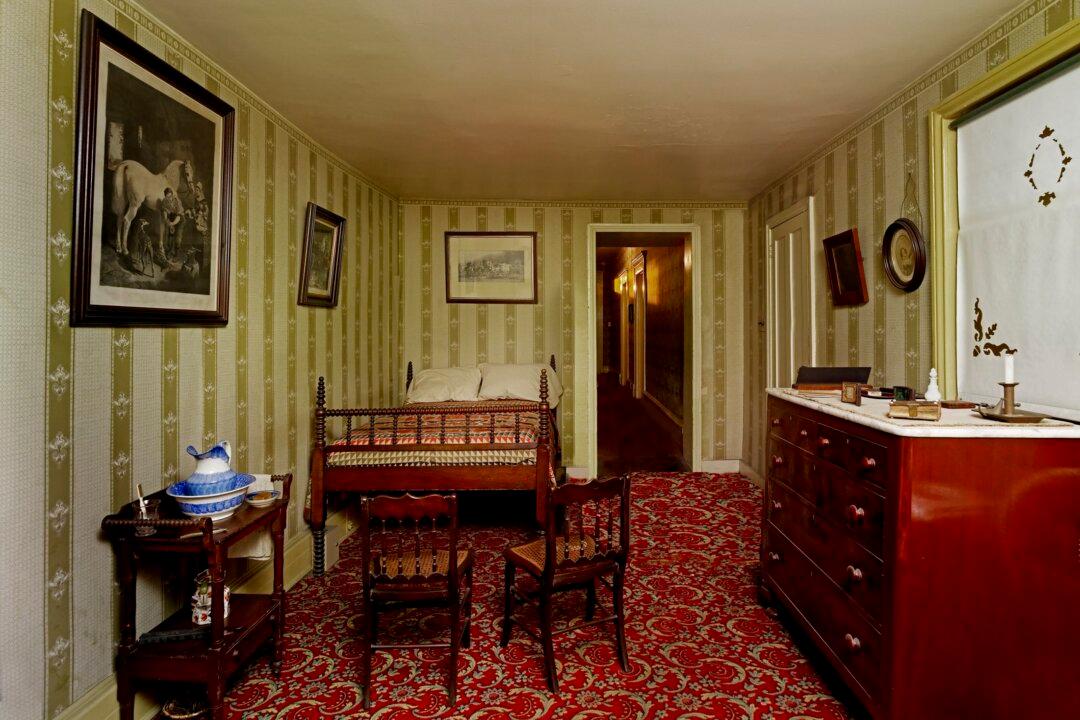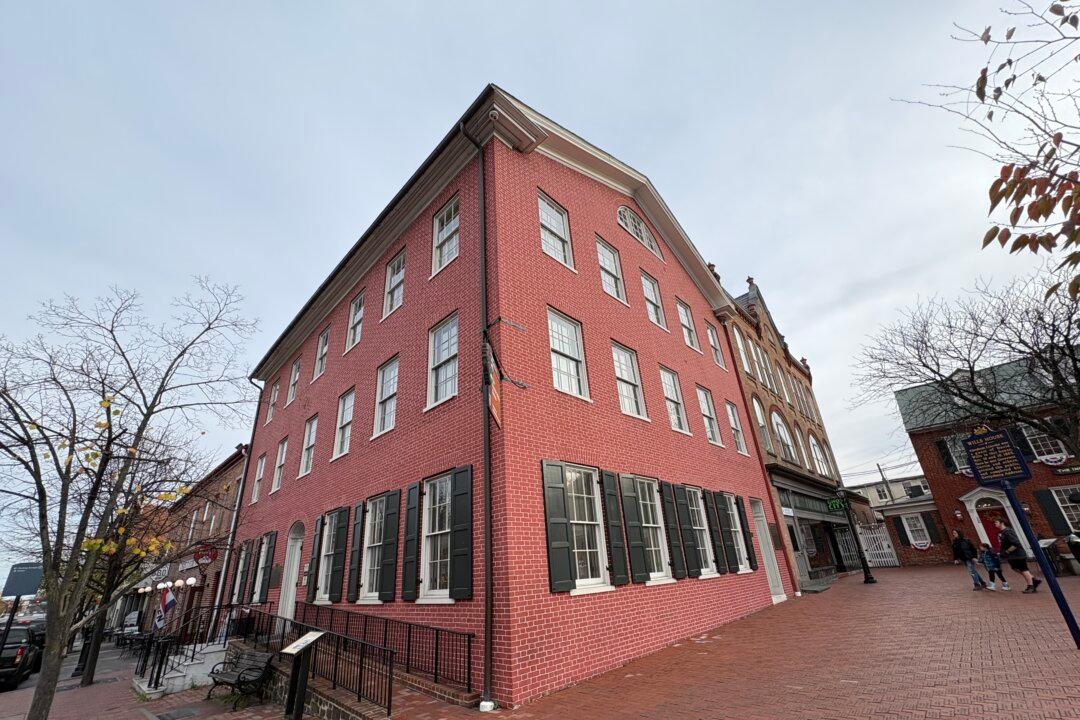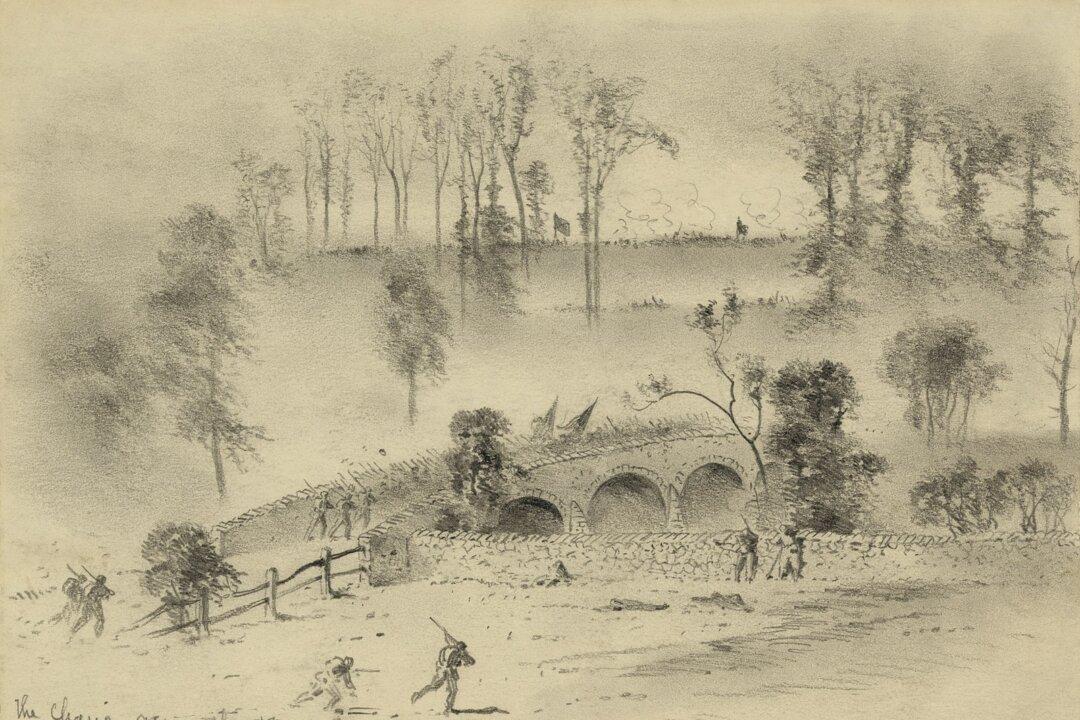Since the mid-19th century, Cravens House has been prominently visible on Lookout Mountain, Tenn., from the city of Chattanooga in the valley below. In fact, a December 26, 1863, Harper’s Weekly etching depicting a noteworthy Civil War battle that occurred there is on display at the Lookout Mountain Battle Visitor Center, and the “white house” is the only obvious structure on one side of the rocky mountainside.
While it can be driven to, the National Park Service (NPS) preserved and protected Cravens House is actually most accessible via an off-the-beaten-path trail, which winds down from an imposing boulder that jets out of Lookout Mountain from Point Park.
It behooves visitors to first find the free parking at Point Park, glean historical information from exhibits and rangers at the Center, and then pay a small fee (or show an America the Beautiful Access Pass) to enter through the park’s 1903-constructed, castle-like entryway. Once inside, Point Park features educational monuments and interpretative signage, overlooks of the Tennessee River’s dramatic Moccasin Bend, and Ochs Memorial Observatory, a mini-museum with historic photography and artifacts.
From there is Lookout Mountain Battlefield, encompassing 3,000 acres of land including the peak, point, and ridges of Lookout Mountain. The trail system includes hours of hiking opportunities, but a moderately difficult, approximately two-mile, round-trip trail affords history adventurers an opportunity to take a reflective jaunt to Cravens House. Along the way are massive stone overhangs and shallow caves where one can imagine that Civil War soldiers on both sides took shelter. And then the trail opens to the plateau where the white-washed, wood-frame-and-board Cravens House has been a fixture since 1856, when industrialist Robert Cravens constructed it for his family.

Although Cravens opposed secession—as tensions between northern and southern states escalated prior to 1861—he consented to the Confederacy of Tennessee. After the Confederates claimed victory in the September 1863 Battle of Chickamauga (just a few miles southeast of Chattanooga), close to 50,000 Confederate forces converged on and around his home and farm to establish a military position, and he and his family lived under their siege. According to the NPS, the family members would take turns watching for Union cannon blasts from the valley below so they would know when to take cover in the stone basement.
When the Union launched an all-out assault on Lookout Mountain on Nov. 24, 1863, the 58-year-old Cravens fled with his family to Ringgold, Georgia, just 18 miles away.
Caught up in the fog-shrouded skirmish that became known as the “Battle Above the Clouds” was the Cravens homestead, due to its location on a plateau on the eastern side of Lookout Mountain, facing Chattanooga. In fact, Cravens House figured conspicuously not only in news publications of the time, but was also the backdrop in various Civil War-era artist sketches. One American artist at the time, Theodore Russel Davis (1840–1894), depicted a Union soldier firing on one side of the house while Confederate soldiers retreat on the opposite side.
During the battle, Cravens House also factored into battlefield maps, and it is still cited today in depictions of educational battlefield strategy.
After fierce fighting around Cravens House, the family returned to find that their beloved home had been shelled beyond recognition. Plus, soldiers and journalists had stripped much of the property to take home “souvenirs” of the battle site. However, the home’s skeletal structure, its chimney, and its foundation were intact. And the Cravens, when they returned at the war’s end, rebuilt the home, this time adding a second story. The family persisted living post-war in their home on the site until Robert Cravens death in 1886 and the death of his wife, Caroline Cravens, in 1896.
In decades afterwards, the Chattanooga Chapter of the Association of Preservation of Tennessee Antiquities maintained Cravens House until it became part of the NPS. Today, it is a worthwhile example of 19th-century civilian fortitude despite a bloody battle waged at their home.





